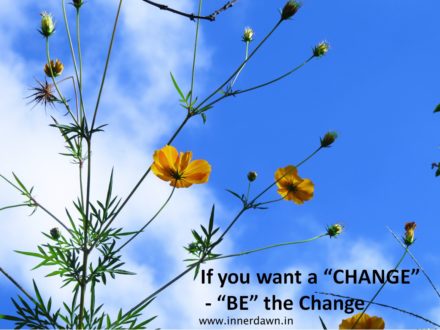Understanding bystander effect – How to overcome and become socially responsible

First let us understand who is the bystander in the context of “the bystander effect”. A person or a group of people who observe an inappropriate behavior – like a conflict, harassment, bullying, rudeness, put downs, racism, threats, dangerous actions, discrimination etc, is a bystander and typically doesn’t take part or take action. This could be a one off or repetitive situation happening. Though it is possible to intervene, whether the bystanders actively get involved or intervene or provide help in the given situation depends upon multiple factors. If you are able to address some of these factors and be aware of them, it is possible and feasible to affect the change in ourselves and in the people around us to enable and be empowered to address the inappropriate behaviors right at its origin.
It has been observed in real life incidents as well as through research that, people are less likely to intervene and provide help when they are in a group rather than when they are the only person around. This process is called the bystander effect.
The Murder Of Kitty Genovese is the most often quoted example for the bystander effect. She was attacked by a knife wielding person right outside her own apartment in 1964. The attack continued for about 30 minutes, and she was stabbed multiple Times, and she screamed out for help that he was killing her. Many people from the same apartment had watched, observed or heard her screams for help. But nobody intervened or even called the police, for 35 minutes, before the police arrived. The attacker left her a couple of times and then came back to resume the attack. Any intervention in any of those times also could have saved her.
We see similar behaviors even today in our own societies. When we understand the psychology behind this behavior, it is possible to create awareness and strategies to break this behavior, to address the societal apathy that this results in, and make us more socially responsible, aware and proactive citizens.
- Diffusion of responsibility: The group of people, who are bystanders, feel that the responsibility of taking action or intervening in a given situation is being shared by everybody in the group, thereby reducing the individual responsibility. That means if there are 10 people in a gathering who are observing an unacceptable behavior or situation, then each person feels only about 10% of responsibility to take an appropriate action to address the situation or to defuse the situation etc.
- Pluralistic ignorance: Though some of the people in the group would be inclined to intervene, they look for an initiative or cues from others in the group. If they don’t get any, they would sacrifice their personal inclination to not be seen as deviant from the rest of the group.
Each person assumes that somebody else would take an action, and may also assume that others are more competent and capable perhaps. This would result in nobody taking an action in time to make an effective intervention.
What can be done to overcome the bystander effect? How can people respond better to intervene or address the situations?
- Being aware of the bystander effect
By understanding the bystander effect and being aware of that can enable you to not be affected by the same, and not be held back from taking any appropriate action. This can help you take conscious steps to make yourself effective in the given situation. Once you take a helpful action, it generally would spur the second, third and others to join in.
- Assess the situation and the risks
Assessing the situation means, recognizing the situation or the behavior of a person as inappropriate, harmful, threatening or damaging etc. Though your understanding of the situation may not be 100% accurate, it is adequate if you are able to understand the overall intent or meaning of situation. Some level of ambiguity is tolerable. Assess the risk involved to yourself, others as well as the victim, so that you can select a strategy to intervene appropriately. This makes it opportunity for you to make a difference.
- Be aware of the strategies that can be used to intervene
Many times you do not intervene appropriately because you do not know what to do in a given situation. The intervention could be direct or indirect as well. Some of the strategies could be – getting involved, interact with the victim, show support to the victim, call out the behavior, challenge the perpetrator, provide an interruption or distraction, try to calm the person down etc. Ensure that you choose a strategy that you feel is safe for yourself, others and the victim as well, at the same time is effective in stopping the inappropriate behavior. Depending upon the severity of the situation indirect methods that could be deployed can be calling the police or the ambulance as needed.
- Respond by action with appropriate strategies
Take appropriate action. Sometimes it might be possible for you to act immediately, or sometimes it might be more appropriate to take an action subsequently in order to help the victim. For example, if you are not able to take action immediately, you could talk to the victim later and provide empathy and support, or help the victim take appropriate action like registering a complaint etc.
- If possible involve others in the group as well.
If there is a possibility to involve others in the group, you can do that. One of the strategies is to identify a particular individual in the group and ask them for support or help. This would be a personalised request to that individual person and it would make it difficult for them to refuse.
We don’t have to wait till the problem escalates into a highly serious incident or crime to intervene. Usually, in any environment, there is an accumulation or pile up of multiple incidents that culminate into an incident of higher severity or crime. Each one of these incidents is an opportunity for us to intervene appropriately and effectively. Inappropriate conducts like bullying, unsavory comments, stalking, harassment etc happen innumerable times. And when they go unchallenged or tolerated, then it encourages more severe acts of abuse, violence, molestation, rape, murder etc to follow. We can learn to intervene, discourage, defuse and refuse to tolerate any such occurrences in the earlier stages itself, and not wait till it worsens. To a fair extent this could act as a prevention mechanism and a deterrent.
About the Author:
Kala Balasubramanian is certified Counselling Psychologist/Psychotherapist with a Masters in Counselling and Psychotherapy, Diplomas in Counselling and has further certifications specializing in couple/marriage/relationship counselling and family counselling. As a professional counsellor she provides a supportive, understanding, professional and confidential environment to work with clients – Individuals and Couples explore their emotions, help them understand and manage their challenges, relationships and stress better.

Clearly stated and given tips for taking responsibility with caution to intervene and diffuse the situation.